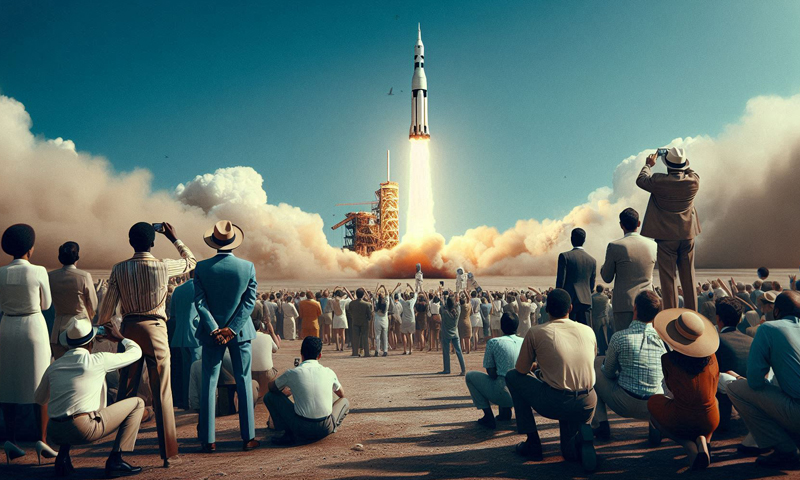Space exploration isn’t cheap. From building high-tech spacecraft to launching them beyond Earth’s atmosphere, every mission costs billions. Over the decades, governments and private companies have poured enormous amounts of money into space programs, leading to groundbreaking discoveries and technological advancements.
But which missions stand out as the costliest of all time? Here’s a look at the ten most expensive space missions in history, ranked by their estimated costs.
1. Apollo Program (1961–1972) – $153 Billion (Adjusted for Inflation)
NASA’s Apollo program, which put humans on the Moon, remains the most expensive space endeavor ever. Originally costing $25.4 billion in the 1960s, inflation pushes that number to around $153 billion today. The program funded the development of the Saturn V rocket, lunar modules, and multiple crewed missions, culminating in Apollo 11’s historic Moon landing in 1969.
2. International Space Station (ISS) – $150 Billion
A collaborative effort between the U.S., Russia, Europe, Japan, and Canada, the International Space Station (ISS) is one of humanity’s most ambitious projects. Since its first module was launched in 1998, the ISS has served as a floating laboratory in low Earth orbit. The $150 billion price tag covers decades of construction, maintenance, and resupply missions.
3. Space Shuttle Program (1981–2011) – $196 Billion
The Space Shuttle program, which lasted 30 years, revolutionized space travel with reusable spacecraft. NASA’s fleet of orbiters—Columbia, Challenger, Discovery, Atlantis, and Endeavour—conducted 135 missions, including satellite deployments and ISS assembly. However, the complexity of maintaining and refurbishing the shuttles made it an incredibly costly program.
4. James Webb Space Telescope (JWST) – $10 Billion
Launched in December 2021, the James Webb Space Telescope is NASA’s most advanced observatory. Designed to look deeper into the universe than ever before, JWST’s development was plagued by delays and budget overruns. Its $10 billion cost makes it the most expensive telescope ever built, but its potential for groundbreaking discoveries in astronomy justifies the price.
5. Mars Curiosity Rover (2011–Present) – $2.5 Billion
NASA’s Curiosity rover landed on Mars in 2012 and has since been exploring the planet’s surface. Initially budgeted at $1.6 billion, the cost ballooned to $2.5 billion due to delays and increased complexity. Curiosity’s mission has provided invaluable data on Mars’ climate, geology, and potential for past life.
6. Artemis Program (Ongoing) – Estimated $93 Billion by 2025
NASA’s Artemis program aims to return humans to the Moon and establish a sustainable lunar presence. Initially projected at $35 billion, costs have skyrocketed, with estimates now reaching $93 billion by 2025. Artemis I, an uncrewed test mission, launched successfully in 2022, paving the way for future crewed missions.
7. Hubble Space Telescope (1990–Present) – $16 Billion
Originally launched in 1990 at a cost of $4.7 billion, the Hubble Space Telescope’s price has climbed over the years due to servicing missions and upgrades. With an adjusted total of around $16 billion, Hubble remains one of the most scientifically valuable tools in astronomy, providing stunning images of the universe.
8. Perseverance Rover & Mars Sample Return (2021–Future) – $7 Billion
NASA’s Perseverance rover, which landed on Mars in 2021, is part of a multi-phase mission aimed at returning Martian soil samples to Earth. The total cost of this project, including the planned retrieval missions, is expected to reach $7 billion. If successful, it will be the first-ever sample return from another planet.
9. Galileo Mission to Jupiter (1989–2003) – $1.6 Billion
Launched in 1989, NASA’s Galileo spacecraft explored Jupiter and its moons for over a decade. Initially costing $1.39 billion, inflation-adjusted estimates push it to around $1.6 billion. Galileo provided groundbreaking data on Jupiter’s atmosphere and discovered evidence of an ocean beneath Europa’s icy surface.
10. Rosetta Mission (2004–2016) – $1.8 Billion
The European Space Agency’s Rosetta mission, launched in 2004, made history in 2014 when it became the first spacecraft to orbit a comet (67P/Churyumov-Gerasimenko). The mission cost about $1.8 billion, culminating in the Philae lander touching down on the comet’s surface—a milestone in space exploration.
Space exploration is expensive, but the knowledge gained is invaluable. These missions have not only expanded our understanding of the universe but have also driven technological innovation on Earth. With projects like Artemis, Mars colonization plans, and deep-space telescopes in development, future missions may push the boundaries of what’s possible—and cost even more.
Would you support funding even more ambitious space missions? 🚀











